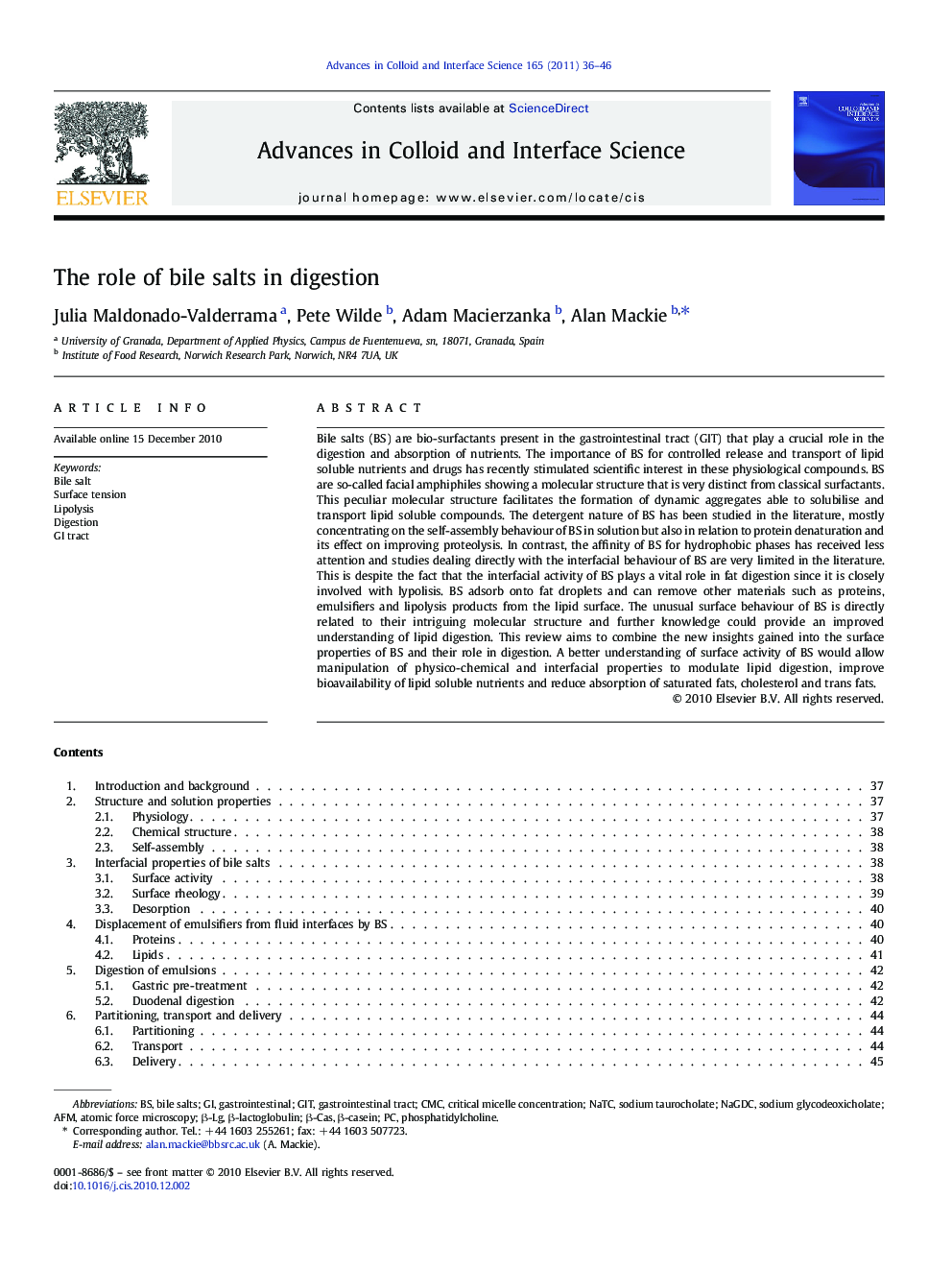| Article ID | Journal | Published Year | Pages | File Type |
|---|---|---|---|---|
| 591003 | Advances in Colloid and Interface Science | 2011 | 11 Pages |
Bile salts (BS) are bio-surfactants present in the gastrointestinal tract (GIT) that play a crucial role in the digestion and absorption of nutrients. The importance of BS for controlled release and transport of lipid soluble nutrients and drugs has recently stimulated scientific interest in these physiological compounds. BS are so-called facial amphiphiles showing a molecular structure that is very distinct from classical surfactants. This peculiar molecular structure facilitates the formation of dynamic aggregates able to solubilise and transport lipid soluble compounds. The detergent nature of BS has been studied in the literature, mostly concentrating on the self-assembly behaviour of BS in solution but also in relation to protein denaturation and its effect on improving proteolysis. In contrast, the affinity of BS for hydrophobic phases has received less attention and studies dealing directly with the interfacial behaviour of BS are very limited in the literature. This is despite the fact that the interfacial activity of BS plays a vital role in fat digestion since it is closely involved with lypolisis. BS adsorb onto fat droplets and can remove other materials such as proteins, emulsifiers and lipolysis products from the lipid surface. The unusual surface behaviour of BS is directly related to their intriguing molecular structure and further knowledge could provide an improved understanding of lipid digestion. This review aims to combine the new insights gained into the surface properties of BS and their role in digestion. A better understanding of surface activity of BS would allow manipulation of physico-chemical and interfacial properties to modulate lipid digestion, improve bioavailability of lipid soluble nutrients and reduce absorption of saturated fats, cholesterol and trans fats.
Graphical AbstractFigure optionsDownload full-size imageDownload as PowerPoint slideResearch Highlights► The facial amphipathic structure of bile salts engenders unique surface properties. ► The interactions with phospholipids helps lipases gain access to lipid substrate. ► Bile salts can help to denature proteins for improved proteolysis. ► The charged nature of these amphiphiles is important for diffusion in the GI tract.
